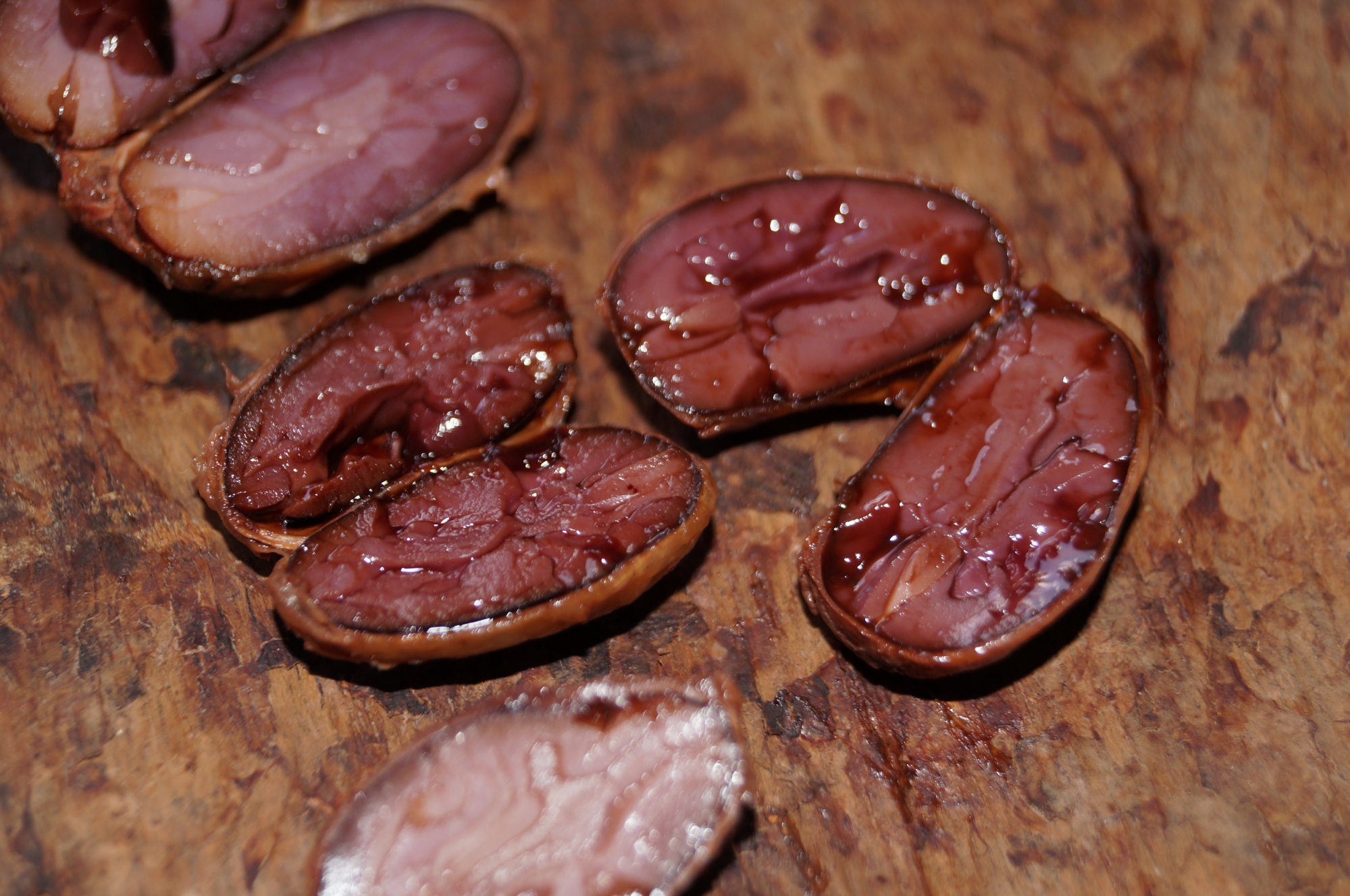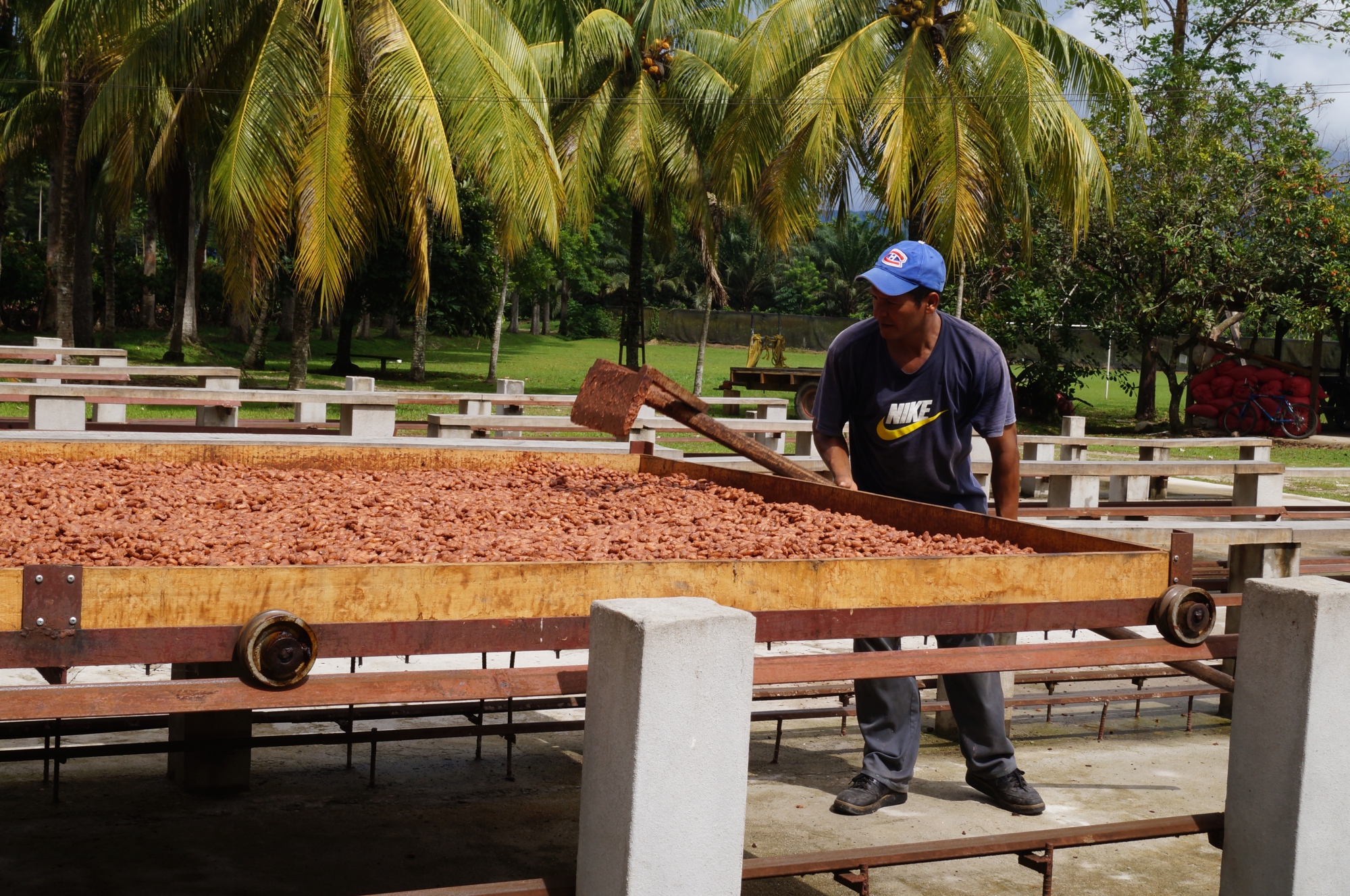Can Cacao Fermentation Be Improved by Adopting Practices from Other Industries?
Chocolate is a complex food matrix where the raw material quality and the subsequent process shape the flavor profile of the final product. One critical step in cocoa processing is fermentation, which is often considered a balance between science and art. According to Daniel O'Doherty from Cacao Services, the pulp acts as the substrate for microorganism metabolism and growth during fermentation. There is a microorganism succession during the process, starting with yeast, followed by Lactic Acid Bacteria (LAB) and Acetic Acid Bacteria (AAB). The process is divided into two phases, aerobic and anaerobic, and the length of each one depends on fermentation practices. During the first phase (anaerobic), yeasts are responsible for the breakdown of pulp surrounding the beans, resulting in alcohol and CO2 production and the starting of bean death. The metabolites produced by yeast create the conditions for bacteria growth on the anaerobic stage, which continues substrate metabolism, flavor precursors development, and bean death. It is a complex process, and the quantity and diversity of flavor precursors produced depend on many factors, such as bean genetics, pulp characteristics, inoculation type (spontaneous or via starter cultures), fermentation mass, turning frequency, and processing facilities, among other factors.
According to Daniel O'Doherty from Cacao Services, the pulp acts as the substrate for microorganism metabolism and growth during fermentation. There is a microorganism succession during the process, starting with yeast, followed by Lactic Acid Bacteria (LAB) and Acetic Acid Bacteria (AAB). The process is divided into two phases, aerobic and anaerobic, and the length of each one depends on fermentation practices. During the first phase (anaerobic), yeasts are responsible for the breakdown of pulp surrounding the beans, resulting in alcohol and CO2 production and the starting of bean death. The metabolites produced by yeast create the conditions for bacteria growth on the anaerobic stage, which continues substrate metabolism, flavor precursors development, and bean death. It is a complex process, and the quantity and diversity of flavor precursors produced depend on many factors, such as bean genetics, pulp characteristics, inoculation type (spontaneous or via starter cultures), fermentation mass, turning frequency, and processing facilities, among other factors. Cacao fermentation, sometimes called "curing," has been conducted for several decades. The processing practices vary depending on the country or the region within a country, production and processing scale, market segment, or even research purpose. With the structural changes experienced in the cacao supply chain over time, consumers and stakeholders often inquire about the possible modernization of cacao fermentation, especially for products oriented to high-value niche markets. Therefore, a common question is: Is it possible to learn and adapt technologies from other fermented products, such as wine or cheese?
Adopting Technology for the Cacao Fermentation Process
Cacao is produced mainly by small farmers, and any modernization initiatives must consider the socioeconomic characteristics of producers. One example is the use of stainless steel as a fermentation vessel. Why not use stainless steel for cacao fermentation, as in wine or beer? Why are farmers still fermenting in heps or wooden boxes? A quick answer is because stainless steel equipment is expensive and not affordable for small farmers, but more importantly, it may not be needed. According to O'Doherty, appropriately executed hep, wooden box, or barrel fermentation can produce high-quality cacao without requiring expensive fermentation vessels. Although using stainless steel vessels may not be the best opportunity for technology adoption, other practices could be more usefully adopted from different industries, especially with the increase in large-scale cacao business models in the past years. With technology adoption comes the possibility of research investment, innovation, and modernization of cacao processing. These efforts could benefit not only large-scale production models but the entire cacao supply chain.
Although using stainless steel vessels may not be the best opportunity for technology adoption, other practices could be more usefully adopted from different industries, especially with the increase in large-scale cacao business models in the past years. With technology adoption comes the possibility of research investment, innovation, and modernization of cacao processing. These efforts could benefit not only large-scale production models but the entire cacao supply chain. Compared to the wine industry, one aspect that has not been extensively explored in cacao is the yeast nutrient requirement and availability during fermentation and the effect on flavor development. As explained by Dr. Nat Bletter, the founder of Madre Chocolate, sugar is sometimes needed to help yeast metabolism in micro-fermentation. In addition, Massimiliano Wax, the VP of Rizek Cacao, describes that while sugar is essential for yeast growth, other nutrients such as nitrogen and vitamins are crucial for yeast performance, because they dictate metabolic pathways resulting in specific flavor precursors. Wax and his team have conducted research showing the best yeast metabolic performance is between 12-30oC, which helped them modify their processing facilities to ensure appropriate temperature and optimize yeast performance.
New Initiatives and Practices in Cacao Fermentation
Another topic investigated in several peer-reviewed articles and some private initiatives is the use of starter cultures in cacao fermentation, which is controversial among stakeholders. Most of the research available has been conducted at the lab-scale or pilot-scale level, and few studies have looked at on-farm fermentation.Some may see this practice as a potential for improving fermentation performance and cacao quality due to promising outcomes reported in the literature. In contrast, others may see this practice as presenting a potential risk of losing the unique terroir effect during fermentation. These inoculated yeasts may compete and potentially overgrow the autochthonous yeast, resulting in the standardization of the cacao flavor profile. A middle point would be to use locally isolated (autochthonous) yeast and bacteria as inoculants instead of incorporating foreign microorganisms, as described by Wax. One example is Hacienda La Esmeralda, where they have conducted research on isolation, lyophilization, and in some cases, the culture of locally occurring yeast. Thus, this practice could potentially improve fermentation performance without the risk of losing terroir effects or product standardization. However, isolation, storage, and culture autochthonous yeast and bacteria require specific research capabilities and facilities not widely available in each producing region. Therefore, more on-farm fermentation research and potential partnerships are needed to determine the potential benefits and risks related to the use of starter cultures and their economic feasibility.
Independently of producer characteristics, at some point, farmers face similar challenges when fermenting cacao. For example, one common challenge is reaching the critical fermentation mass, which is the minimum mass required to develop a good fermentation process. The critical mass will vary depending on processing conditions. According to Dr. Bletter, as a general parameter, the total mass needed to fill out a 1 m3 fermentation vessel can be considered the critical mass. Below this volume, the process must be conducted with care to ensure good fermentation performance.
The available processing mass depends on the total harvesting area, density, crop age, time of harvesting season, or fermentation purpose, among other factors. Therefore, at some point, farmers have to face the challenge of achieving high quality, especially when processing small batches. Dr. Bletter works with farmers to improve micro-scale cacao fermentation in Hawaii, where cacao production and processing are relatively new compared to Latin America or West Africa. He proposes implementing some practices to improve micro-scale fermentation, such as idling in pod storage for 2 to 7 days, inoculation with local yeast, incubation using incandescent light bulbs, nutrient addition, and insulation. These practices have resulted in better fermentation outcomes in micro-batches.
In contrast to micro-fermentation, there is large-scale cacao processing. The large-scale fermentation process in Hacienda La Esmeralda in the Dominican Republic ferments 3 to 4 metric tons of cacao in 2 by 4 m vessels. There, the challenges may be different. Some challenges at large-scale processing may include automatization of cacao turning and process termination based on continuous monitoring of mass temperature, pH, or dissolved oxygen. While the challenges may differ, the scientific principles remain, and some fundamental practices may still apply.
 One aspect often overlooked in postharvest is the transition between fermentation and drying. While most people think these two processes are wholly separated and independent, they share a critical transition period. Wax emphasizes that fermentation continues after transferring the cacao from the fermentation vessels to the drying decks, mainly depending on the thickness of the drying layers. Typically, the cacao is placed in thicker layers during the first days to let fermentation continue while starting a slow drying. Then, cacao is progressively spread in thinner layers to stop fermentation and continue drying until it reaches the desired moisture content.
One aspect often overlooked in postharvest is the transition between fermentation and drying. While most people think these two processes are wholly separated and independent, they share a critical transition period. Wax emphasizes that fermentation continues after transferring the cacao from the fermentation vessels to the drying decks, mainly depending on the thickness of the drying layers. Typically, the cacao is placed in thicker layers during the first days to let fermentation continue while starting a slow drying. Then, cacao is progressively spread in thinner layers to stop fermentation and continue drying until it reaches the desired moisture content.These few examples describe the potential of learning and adopting practices implemented in other industries. Some of these practices are being implemented by stakeholders and have shown positive results in some parts of the world. Other initiatives still require further research and economic feasibility. Overall, the cacao sector is evolving, and there is an opportunity for innovation and improvement!
